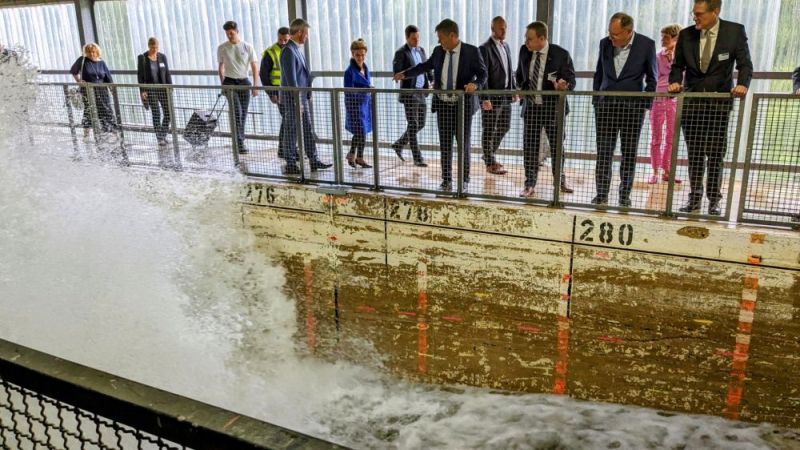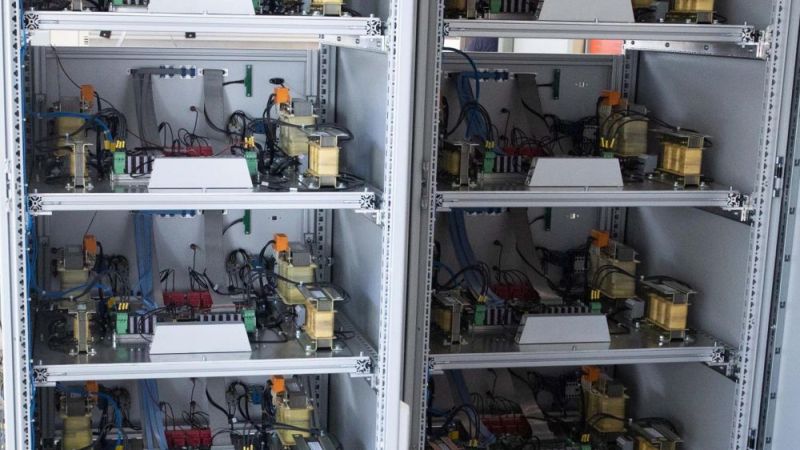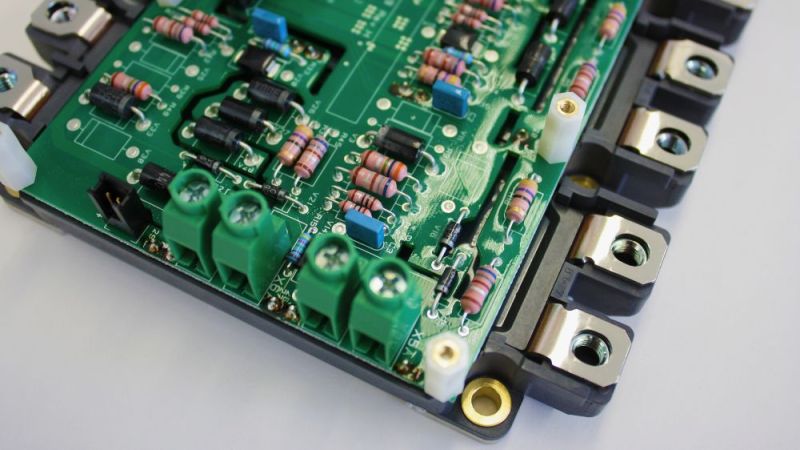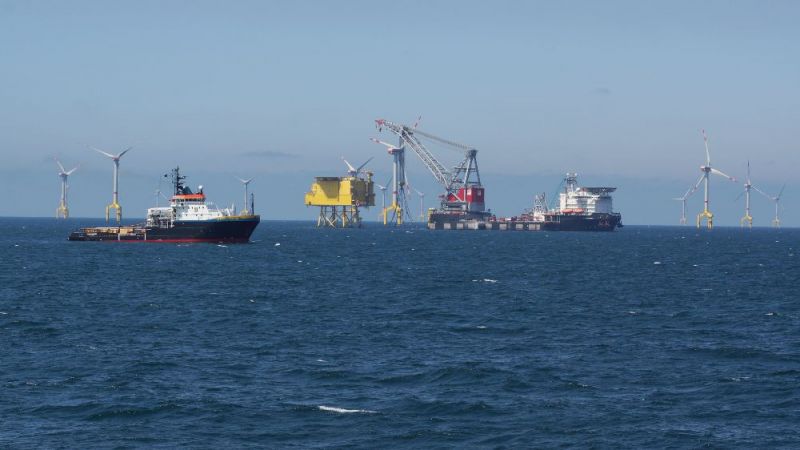Wind power
Accelerated testing of rotor blade bearings
The innovative large bearing test stand proves its worth in normal operation.
The bearings of wind turbines have to withstand enormous loads. Particularly the constant load changes can cause wear or even failure of the roller bearings. The BEAT6.1 large bearing test stand in Hamburg provides improved insights into damage and damage progression on the highly loaded bearings. The Fraunhofer Institute for Wind Energy Systems IWES has now completed a successful test series on the bearing test stand for accelerated testing of rotor blade bearings. This proves the success of the innovative large bearing test stand in normal operation. Optimised blade bearings prevent system downtimes and help to make operation more economical.
Simulating 20 years in six months
In the HAPT (Highly Accelerated Pitch Bearing Test) project funded by the German Federal Ministry for Economic Affairs and Energy (BMWi), the project partners have successfully tested the first rotor blade bearings. In this accelerated test of blade bearings, six hydraulic cylinders transmit up to 50 meganewton metres of static load to a bearing. The hydraulic cylinders have enough power to lift five complete ICE trains. Additionally, the test stand simulates the movements of a wind turbine during operation, including the associated load changes. This allows the scientists to use the test stand to recreate 20 years of operation in just four to six months.
In the HAPT project, the project partners focused in particular on the use of Individual Pitch Control (IPC). This is a load reduction measure that equalises the loads on the individual rotor blades and thereby reduces load fluctuations. Since the commissioning in May 2019, the institute has tested different bearing types for a 7.5 megawatt wind turbine. In the process, the project team was able to demonstrate that the load application works with a dynamic accuracy of 0.1 percent. The scientists were also able to successfully validate the developed endurance running concept. They furthermore gained key insights into wear in blade bearings.
Reducing development costs
Project manager Dr Matthias Stammler explains: "The tests of the rotor blade bearings of the first industrial projects revealed bearing-specific problems that provide our customers with valuable insights into damage mechanisms. This can mitigate future development costs and reduce revenue shortfalls."
The project team evaluates and expands the inspection concept on an ongoing basis. In the next step, the scientists will test new types of T-solid bearings on the test stand. These have a higher fatigue life and are now being compared with the wear life of the common four-point bearings to check their suitability.










